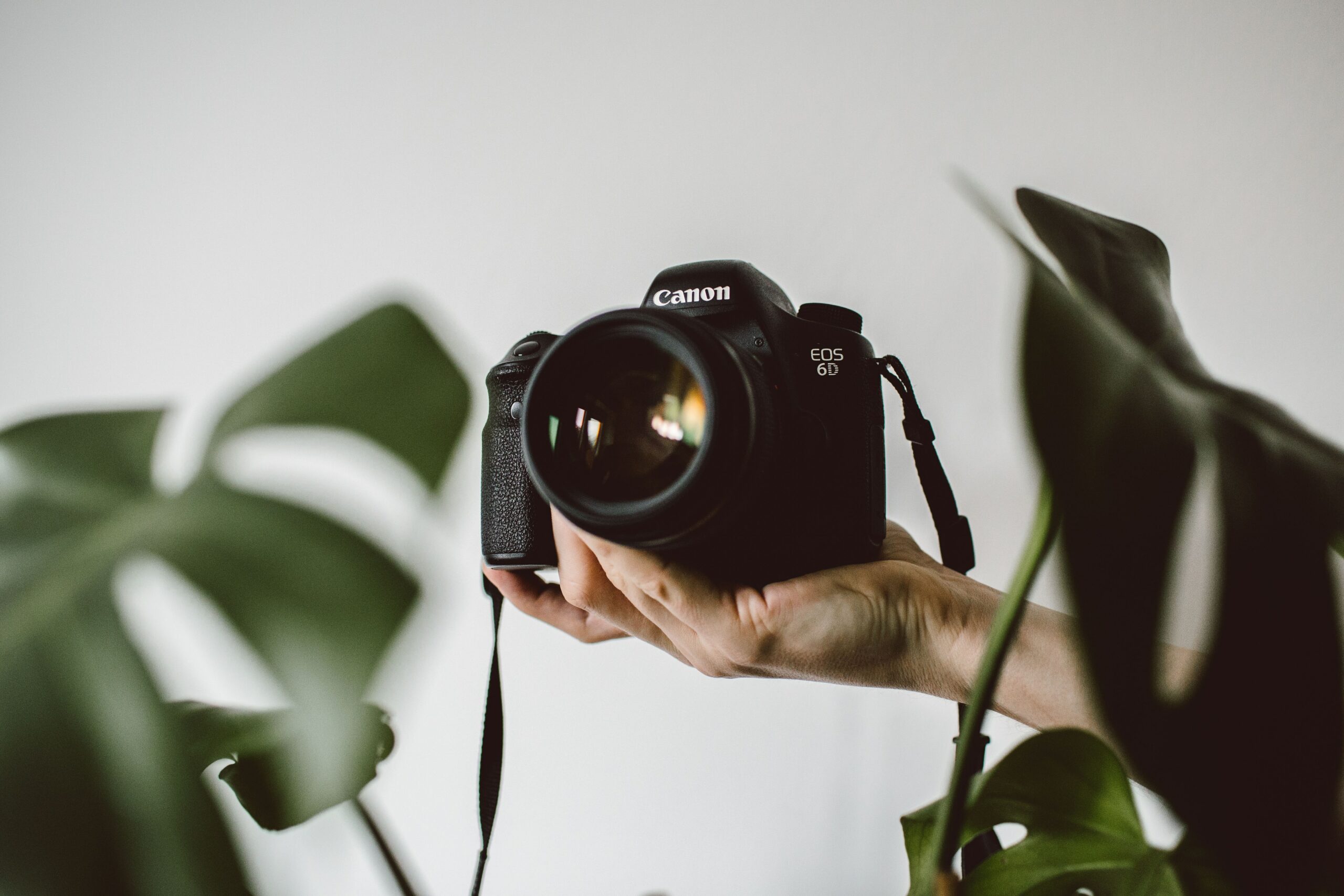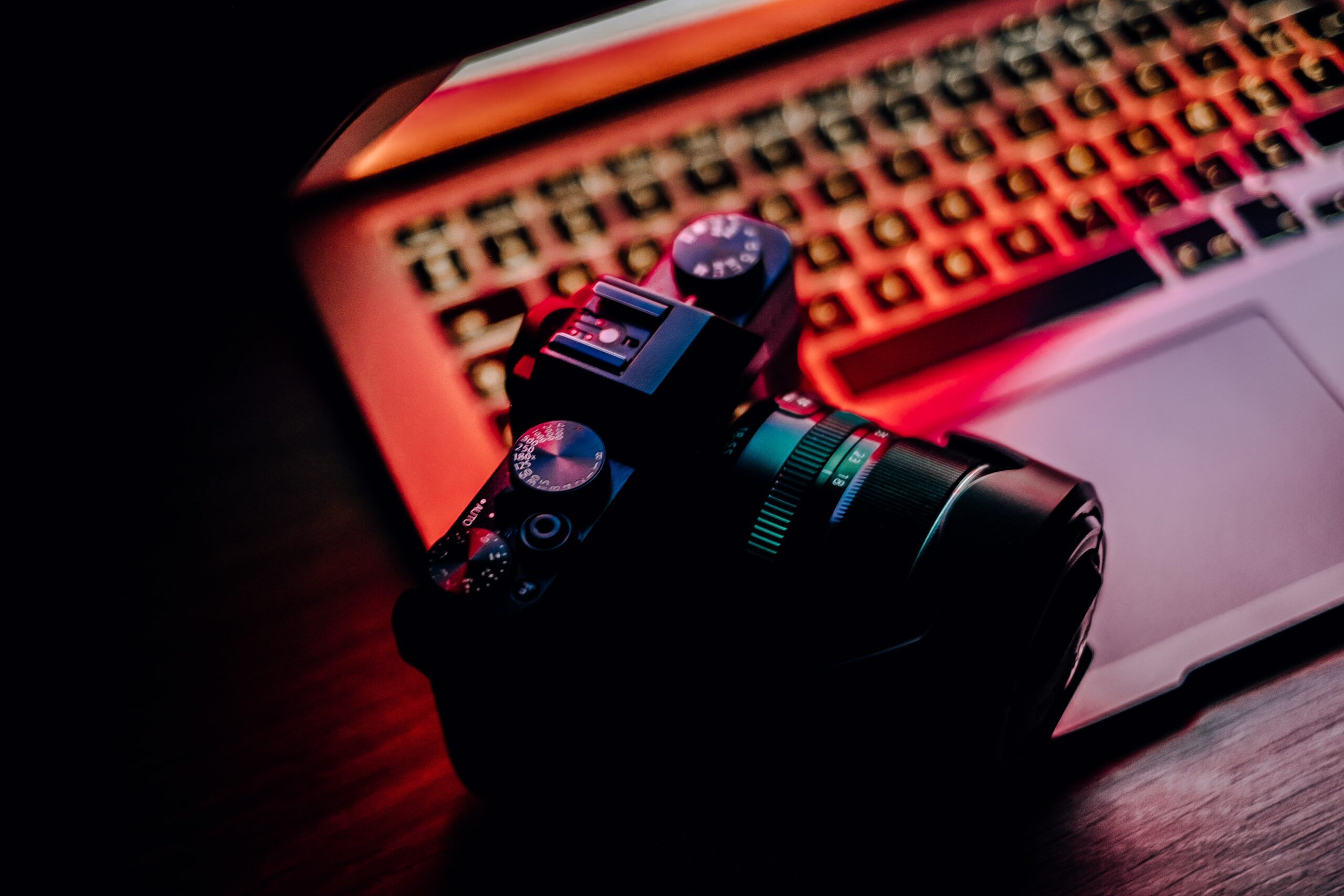Just like a master painter might enjoy mixing their own pigments and having their favourite brushes, photographers also take pleasure in their tools. Not all cameras are the same, and knowing the difference between a mirrorless camera vs a DSLR can help you choose your next camera or help improve your current photography. However, it must be said that although camera gear can be fascinating, there is no substitute for experience and creativity when becoming a better photographer.
The Digital Single-Lens Reflex (DSLR) camera has been around since 1988 and functions in the following way. Light flows through the lens and hits a mirror inside the camera. This mirror reflects the light up to the viewfinder on top of the camera, where you can see the image you are about to photograph. When you click the button to take a photo, the mirror snaps away for a short moment and lets the light of the image hit the camera’s sensor which captures the photograph.
Mirrorless cameras don’t have this mirror. Here the light goes directly through the lens and hits the camera sensor. The image you can see in the viewfinder is a digital live view of the camera sensor, and when you take a photo, the camera sensor simply captures the light which hits it and saves it on your memory card. Mirrorless cameras were commercialised in 2008, and here are a few reasons they are doing well compared to traditional DSLR cameras.

Photo Quality: Both are great!
As a photographer, photo quality should be the main priority. It is not necessary with extremely high resolutions but you need a camera which can take photos you enjoy looking at. Luckily, there is no difference in photo quality across the mirrorless and DSLR systems. Both systems perform equally well and can take beautiful high-quality photos. We must look at other more subtle differences before we can compare the systems.
Feel: Discreet or Bulky?
The first difference between the two types of cameras is immediately apparent. Mirrorless cameras are smaller and lighter than DSLR cameras. DSLR cameras are bulkier because they have the mirror mechanism inside the camera house which takes up a lot of space, making them bigger and heavier.
It is up to you to decide if you prefer the advantages of a light and small camera, which is both convenient in everyday life and when travelling, or if you prefer the sturdy feeling of a big DSLR.
Mirrorless cameras look smaller and less intimidating than traditional big professional cameras and have another feature that makes them even more discreet. Because they are mirrorless, they do not have the traditional shutter sound of a mirror snapping away in a DSLR camera.
In some situations, it can be very useful to have a mirrorless camera which can photograph significantly more quietly than a DSLR. If you are looking for a discreet, small and quiet camera, a mirrorless is the one for you. However, do keep in mind that DSLR cameras have bigger batteries and can take more photos per charge, so mirrorless users should always have an extra battery around.
View Finder: Optical or Electronic?
DSLR cameras have an optical viewfinder. This means that when you look through the camera viewfinder you see the light of the scene in front of you, which is captured by the lens and redirected by the mirror.
With a mirrorless camera, the lens directs the light directly onto the sensor which then sends a digital image to the electronic viewfinder.
With a DSLR you see the “real” optical image in front of your camera and with a mirrorless camera, you see a digital image.

Many photographers like this optical viewfinder, which makes them feel closer to their subject and perhaps connected to a heritage of film photography.
The advantage of the electronic viewfinder of a mirrorless camera is that you see what the final image will look like. If the image is over or underexposed you will immediately realise the error because the digital image in the electronic viewfinder will look too bright or too dark and you can correct it.
With film cameras, you would have to wait for the development to know if you got the perfect image with good exposure. With DSLR cameras you can often see the image on the LED screen immediately after you have taken it. With mirrorless cameras, you can see how the final image will turn out in real-time, which is a big advantage.
The electronic viewfinder is an advantage for beginners who will get a better understanding of how camera settings affect the final image and make fewer mistakes.
Auto Focus: The Future is Digital
A major difference between DSLR and mirrorless cameras is the development of great digital autofocus. When mirrorless cameras were introduced, the autofocus was not always great, but it has improved so much that it has overtaken DSLR cameras.
DSLR cameras still rely on more traditional methods of autofocus, but a lot of research and improvements have been made in mirrorless cameras because they rely only on the digital image which is constantly captured by the sensor. This allows the autofocus of mirrorless cameras to improve as computer processing and artificial intelligence improves.
Facial recognition, eye recognition and animal recognition are all possible for mirrorless cameras thanks to today’s advanced technology. Some mirrorless auto-focus systems even make predictions based on the subject’s movement, to have the perfect focus at the moment the image is captured. Imagine a motorbike racing toward the photographer on a road, the intelligent autofocus will calculate and adjust for the motion and get a good focus.
Probably, we are only seeing the beginning of the improvements made possible by digital technology that will make sure mirrorless cameras keep improving in the future.

Video: The focus is on mirrorless
Although DSLR cameras can have good video features, mirrorless cameras are probably better for video. Firstly, the superior autofocus is very helpful for video shooters. Secondly, the camera industry is focusing on mirrorless cameras for the future, especially for video. Therefore it will probably be easier to find affordable mirrorless cameras with high-resolution video functions, and we will see even more of this in the future. If you want a hybrid camera and wish to use video often, then mirrorless cameras will probably be the right fit for you.
The future of the camera industry is mirrorless. Some brands have stopped manufacturing DSLR cameras because the technology is older and has limited potential to be improved.
Furthermore, the budget of camera manufacturers is going to research and development of mirrorless cameras, which will allow them to get even better in the future.
A DLSR camera can be great if you want to take beautiful photos and find a camera which you enjoy the look and feel of and take pleasure in using. You might be able to find a great DSLR camera for a good price.
If you want to take advantage of the technological improvements of the last and next decades, then mirrorless cameras are probably the better choice for you, especially if you will shoot video or if you like a smaller and more discreet camera.










